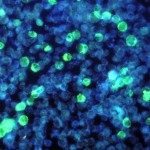Link to Pubmed [PMID] – 33724364
Link to DOI – e2019083510.1084/jem.20190835
J Exp Med 2021 05; 218(5):
The spleen contains a myriad of conventional dendritic cell (cDC) subsets that protect against systemic pathogen dissemination by bridging antigen detection to the induction of adaptive immunity. How cDC subsets differentiate in the splenic environment is poorly understood. Here, we report that LTα1β2-expressing Rorgt+ ILC3s, together with B cells, control the splenic cDC niche size and the terminal differentiation of Sirpα+CD4+Esam+ cDC2s, independently of the microbiota and of bone marrow pre-cDC output. Whereas the size of the splenic cDC niche depended on lymphotoxin signaling only during a restricted time frame, the homeostasis of Sirpα+CD4+Esam+ cDC2s required continuous lymphotoxin input. This latter property made Sirpα+CD4+Esam+ cDC2s uniquely susceptible to pharmacological interventions with LTβR agonists and antagonists and to ILC reconstitution strategies. Together, our findings demonstrate that LTα1β2-expressing Rorgt+ ILC3s drive splenic cDC differentiation and highlight the critical role of ILC3s as perpetual regulators of lymphoid tissue homeostasis.


